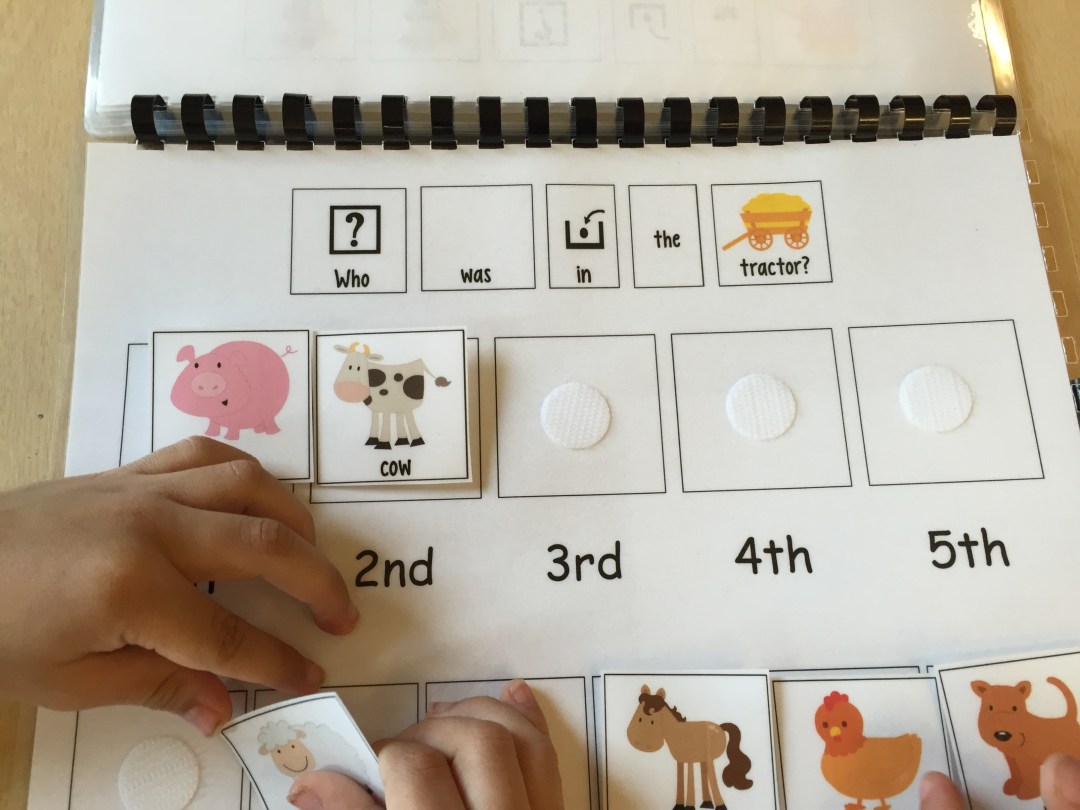Growing up next to a corn field and driving a tractor to mow my family yard I had to create some farm themed books! Since it’s harvest time I figured this is the perfect time of year to include some fun farm adapted books and activities into your classroom! I created 3 adapted Farm Books to use which include Farmer, Farmer What Do You Hear?, Farmer, Farmer Who’s in the Tractor?, and “Farmer, Farmer What Do You See?”. Each book states on the cover which common core standards align with the book.



There is also a teacher page included inside each book to provide some different teaching strategies and ideas of how to use the book in your classroom.

Farmer, Farmer What do you hear? is a fun adapted book to help the students work on identifying animal sounds with the correct animal. If the student is having difficulty identifying the correct animal for the given animal sound, I provide the student with a choice of 2 animals. For example, “moo, moo who can it be?” If the student is having difficulty selecting the correct animal, I narrow the choices to 2 animals. “is it a cow or a sheep?” Sometimes limiting the choices helps the students identify the correct answer. I also make sure I model the animal sounds and the names of the animals multiple times while reading the book. I even have the students help me make the sounds and we can be really silly during this book. I have found some of my students are not exposed or know some of these common farm animals.


Farmer, Farmer Who’s in the Tractor? focuses on learning farm vocabulary terms and sequencing terms. I start the lesson by pointing to each animal on the right side of the book and reviewing the names of the animals and each animal sound.

As I read the book, I touch each word square so the students can follow along with the book and help read some of the words. For the first page I read “Farmer, Farmer Who’s in the Tractor?”. Then I moved to the bottom of the page and read “1st a…” and point to the pig in the tractor and wait for the student to say “pig”. The student has to find the pig from the animals on the right side of the book and attach the pig picture to the empty box on the bottom of the page. I finish reading the sentence by saying “pig in the tractor”. You can always add in some “wh” questions by asking “who is in the tractor?”, “what does the pig say?” or “what color is the pig?”

I continue to read the book in the same manner for each page. After I read the sentence on the bottom of the page I review the animals in the tractor. For example, after the student puts the sheep on the third page and we finish the sentence I point back to the tractor and say “first a pig, second a cow, “third a sheep”. I do this for each page to help the student remember the sequential order of the animals for the final page in the book.

At the end book I see if the student can remember the order of the animals. Sometimes I give the student a choice of 2 animals. For example I might ask the student, “first a pig or a horse?” I also sometimes flip back in the book to help the students remember the order. I added the extra dog picture just so there is always a choice of at least 2 pictures for the students.

Farmer, Farmer What Do You See? is to learn farm vocabulary terms and the prepositional concept “in”. All 10 farm animals are “in” different locations around the farm. The repetition of the concept “in” helps the student learn this prepositional term, as well, as different places on the farmer such as the chicken coop, field, and hay stack.

I have the students find the correct animal from the right side of the book and place it in the blank box. Then we read the final sentence together again. For these students I often ask questions during the book such as “what does the duck say?” or “what color is the duck?” to review some of the concepts we worked on during the past few sessions.

I have some of my students complete the final page to see if they can remember where all the animals are on the farm. If the student is having trouble remembering where the animal was then I turn back to that page in the book and read the final sentence again such as “a pig in the mud.” Then I see if the student can find the mud picture and place it in the empty box next to the pig phrase. After the student matches all the locations with the correct animal we read the final page together pointing to every box. This is a challenging activity for some of the students but it is a great review of the vocabulary we just learned.

Latest posts by Sarah Gast (see all)
- Tips to Assessing a Student’s Comprehension - November 3, 2016
- What are adapted books and Why should I use them? - October 6, 2016
- Farm Adapted Books! - September 1, 2016


